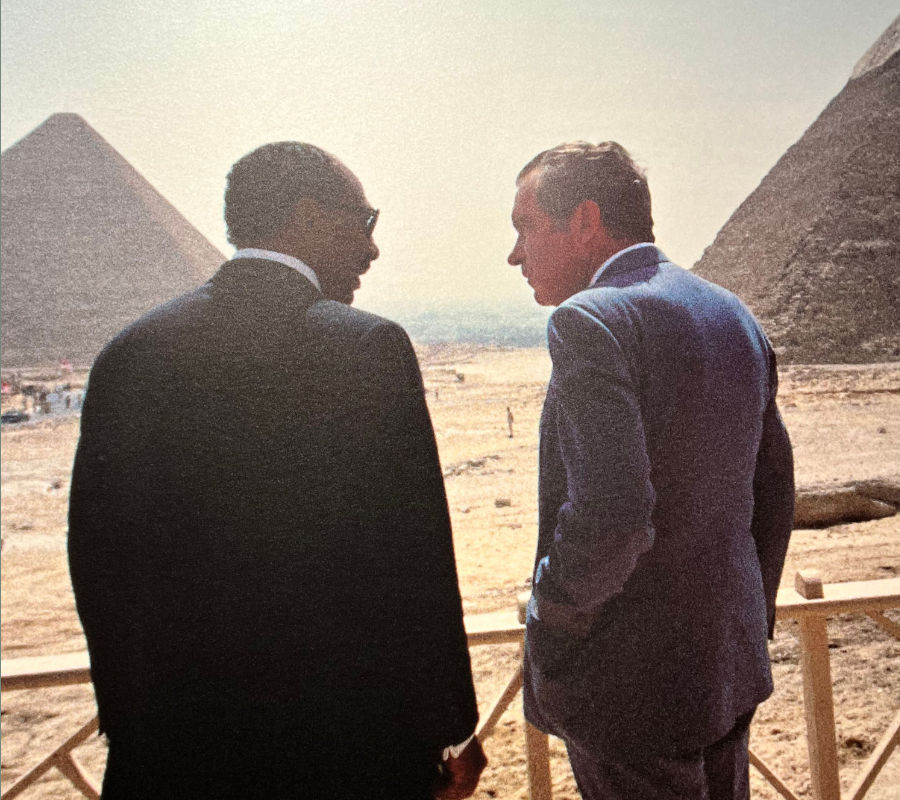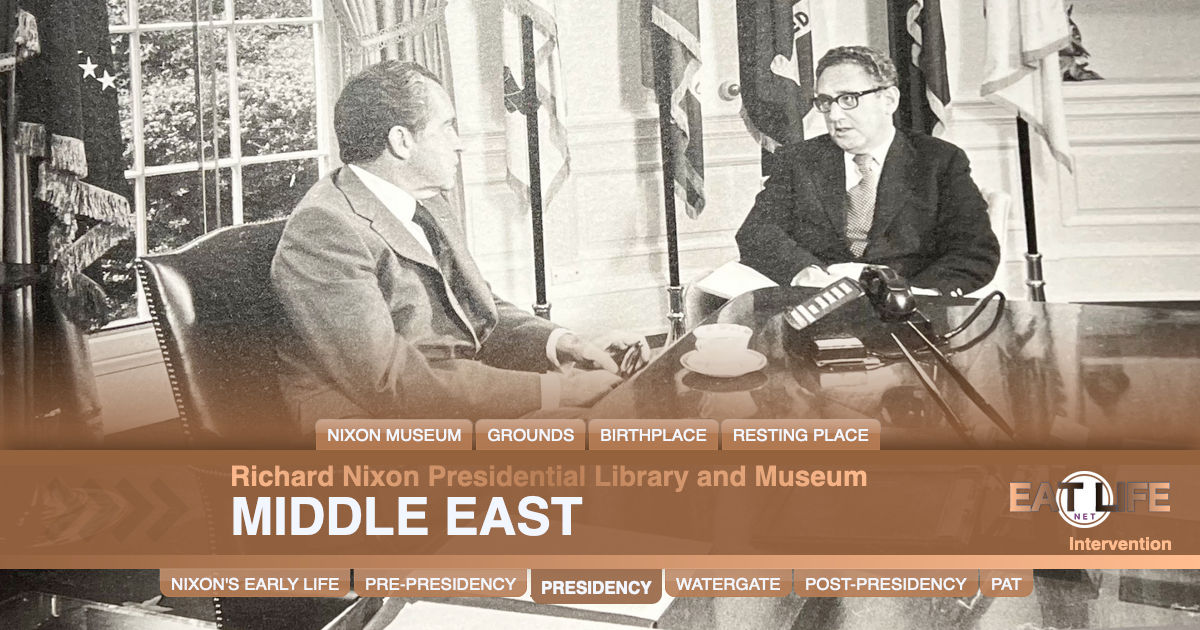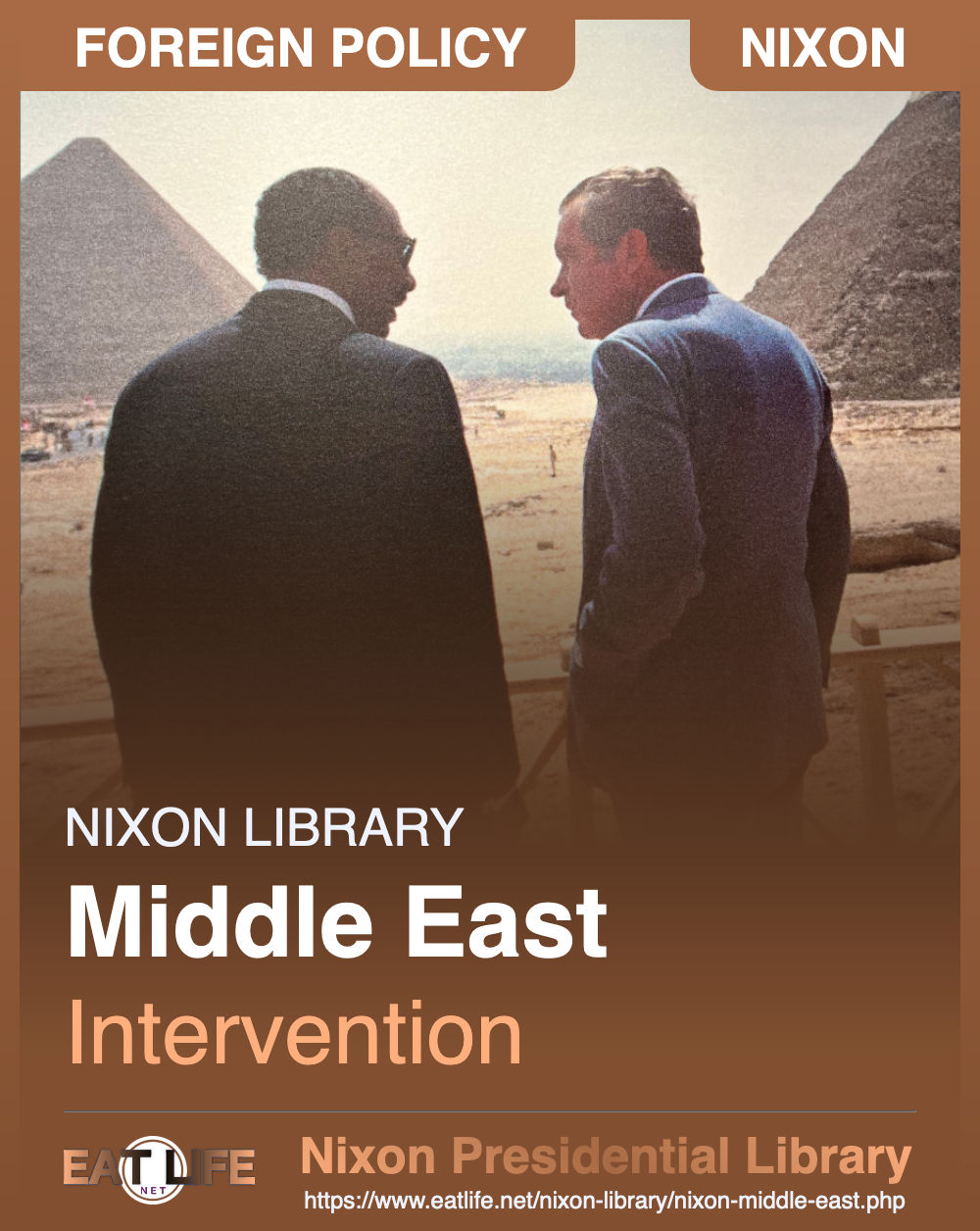The 1967 Six-Day War between Israel and its Arab neighbors Egypt, Syria, and Jordan ended in a decisive Israeli victory. Israel annexed territory from each of the vanquished nations. A series of failed peace attempts in the following years left the region even more bitterly divided.
It wasn't until after the devastating Yom Kippur War in 1973, when Egypt and Syria launched a surprise attack on Israeli troops occupying the Sinai that an environment conducive to negotiations emerged. Israel's successful rally - thanks to President Nixon's decision to airlift supplies to America's ambushed ally - created an opening for Egypt's visionary leader Anwar Sadat to take a different approach to negotiating peace.
The Nixon administration seized this new opportunity. By May 1974, the U.S. had negotiated disengagement agreements between Israel and both Egypt and Syria.
In July 1974, President Nixon was welcomed in both Egypt and Israel. He also went to Jordan, Syria, and Saudi Arabia - becoming the first American President to visit those three countries.
In Cairo and Alexandria millions of Egyptians lined the President's route. In Jerusalem, the president of Israel raised a toast "in gratitude and appreciation" to Nixon because of your special, historic role in giving strength to an historic people." Nixon left the region with a renewed sense of hope for its future.
... it is only the beginning of a much longer journey, a journey that will be difficult, a journey that has many pitfalls potentially in it, but one that is worth taking ... a journey toward a lasting peace, not only in the Mideast but all over the world.
- June 19, 1974
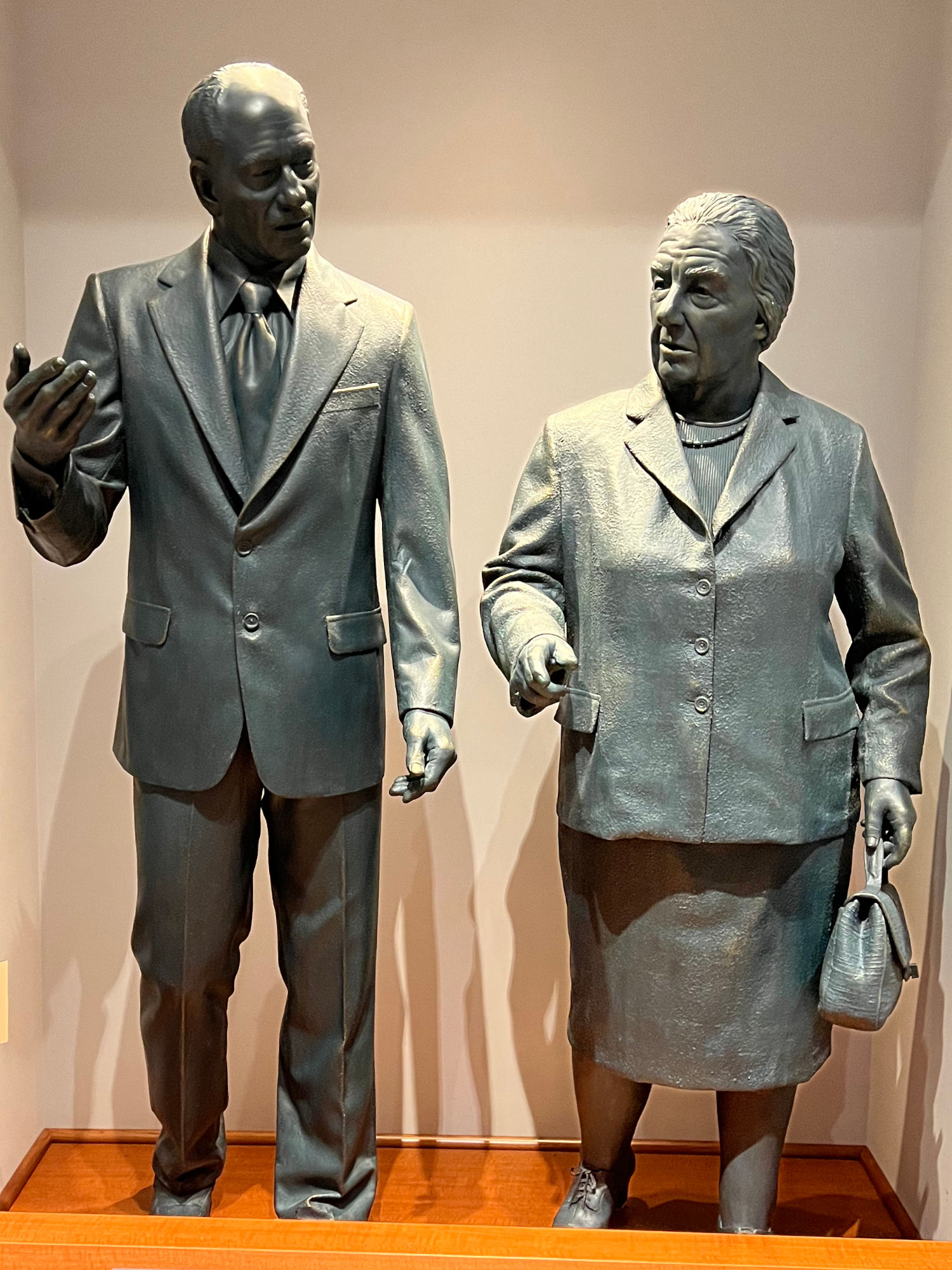
Egypt's Anwar al-Sadat and Israel's Golda Meir were bitter opponents in the Yom Kippur War, but their vision and leadership helped pave the way for a new approach to stability in the Middle East.
The day-to-day operation of Sadat's government was clumsy and inefficient, but the big decisions - those Sadat reserved for himself - were breathtaking and often transcendent ... Seldom has one man rendered so much conventional wisdom about international relations suddenly obsolete.
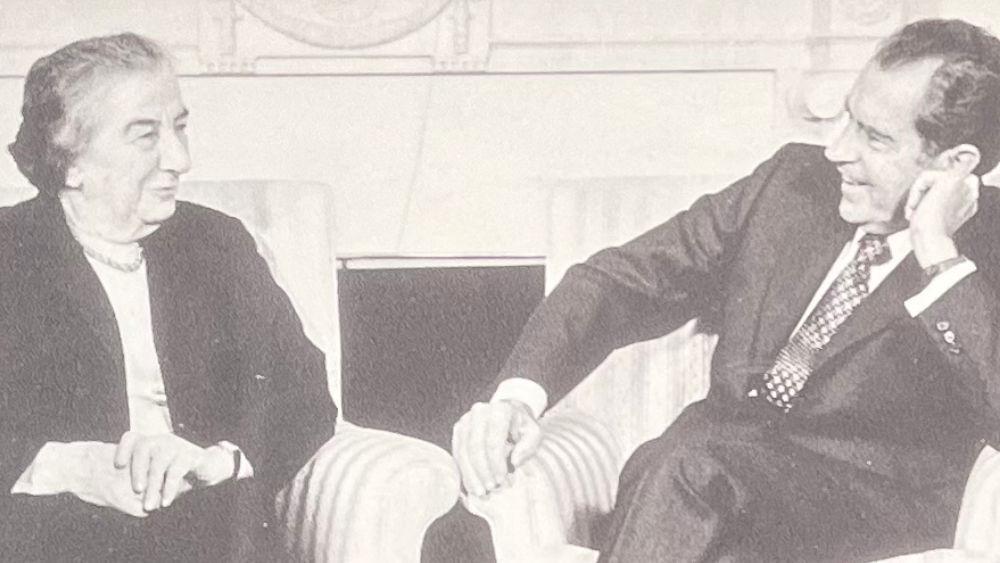
- Prime Minister Golda Meir and President Nixon -1971 in the Oval Office
Nor, to me, could Prime Minister Golda Meir be just another leader ... We both knew that together we were playing for the highest stakes, that the balance between East and West, the lifelines of the industrial world, and Israel's existence were all at risk in the explosive conflicts of the Middle East... Golda Meir was an elemental force of nature.
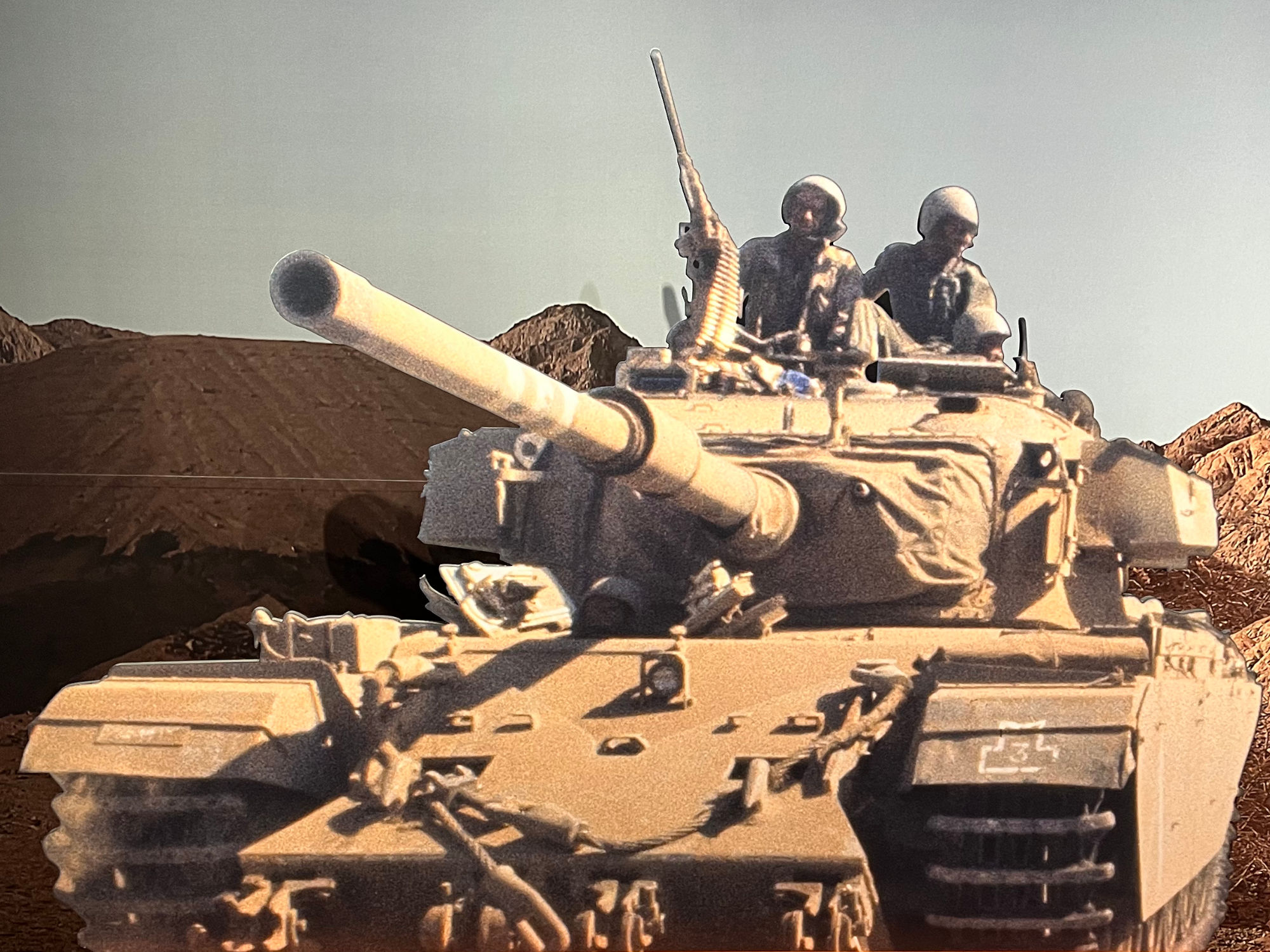
With Israeli troops seriously outnumbered and facing possible defeat at the hands of the Soviet-backed Arabs, Nixon ordered an emergency airlift of supplies. "Send everything that will fly," he ordered. The American airlift enabled Israel to launch a decisive counterattack that pushed the Egyptians back across the Suez Canal.
Nixon dispatched Secretary of State Kissinger to negotiate a peace agreement. By October 24 a tentative ceasefire was in place.
In late 1973, however, the Arab-imposed oil embargo — retaliation for President Nixon's aid to Israel - hit Americans at the gas pumps and in their pocketbooks, and the world economy suffered a serious blow.
By May 1974, disengagement agreements between Israel and both Egypt and Syria had been negotiated with the help of the Nixon administration. These agreements became the foundation for President Carter's Camp David Accords in 1978 and the subsequent Egypt-Israel Peace Treaty of 1979.
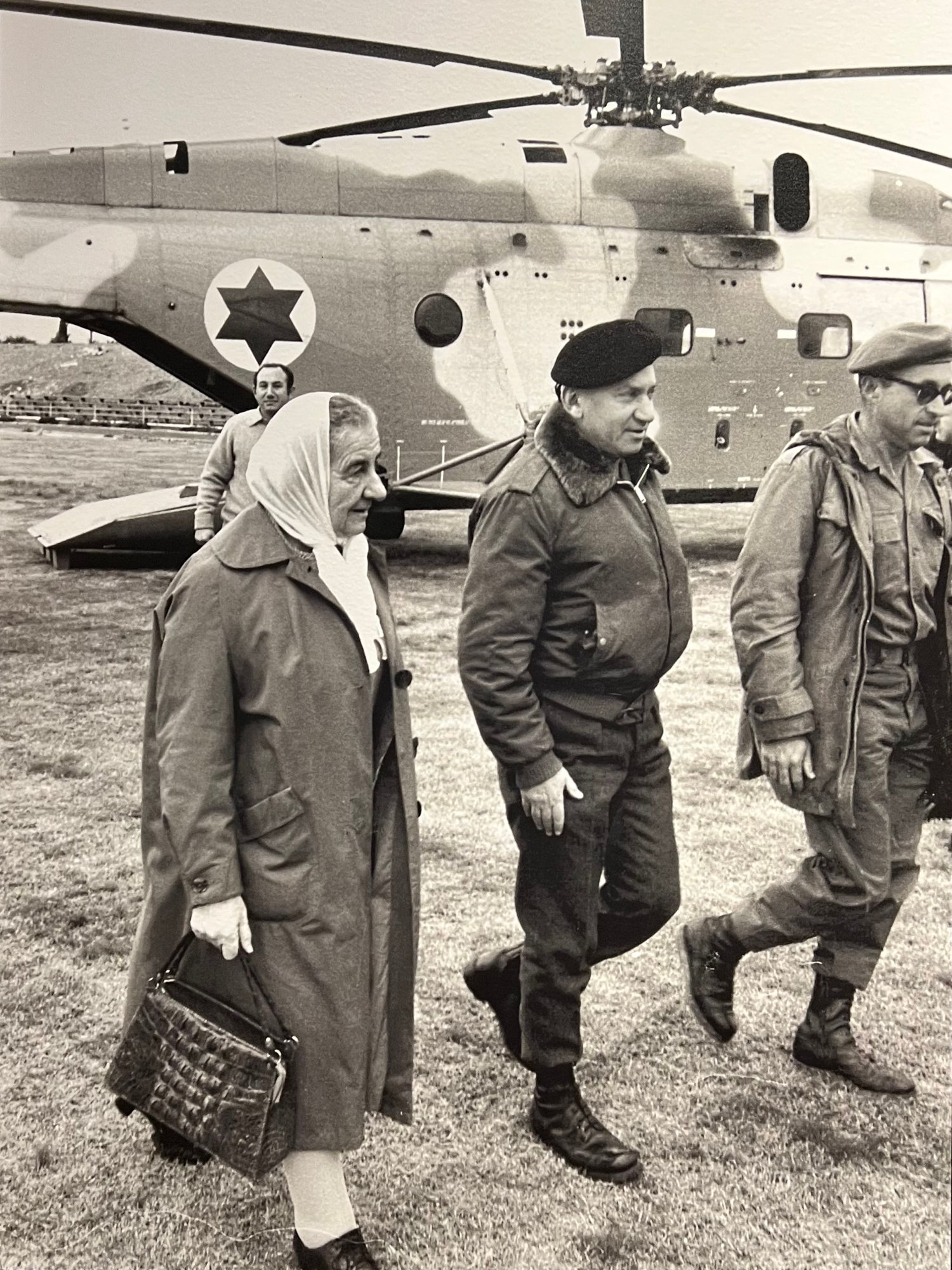
- Israeli Prime Minister Golda Meir and her chief of staff disembark from their military helicopter.
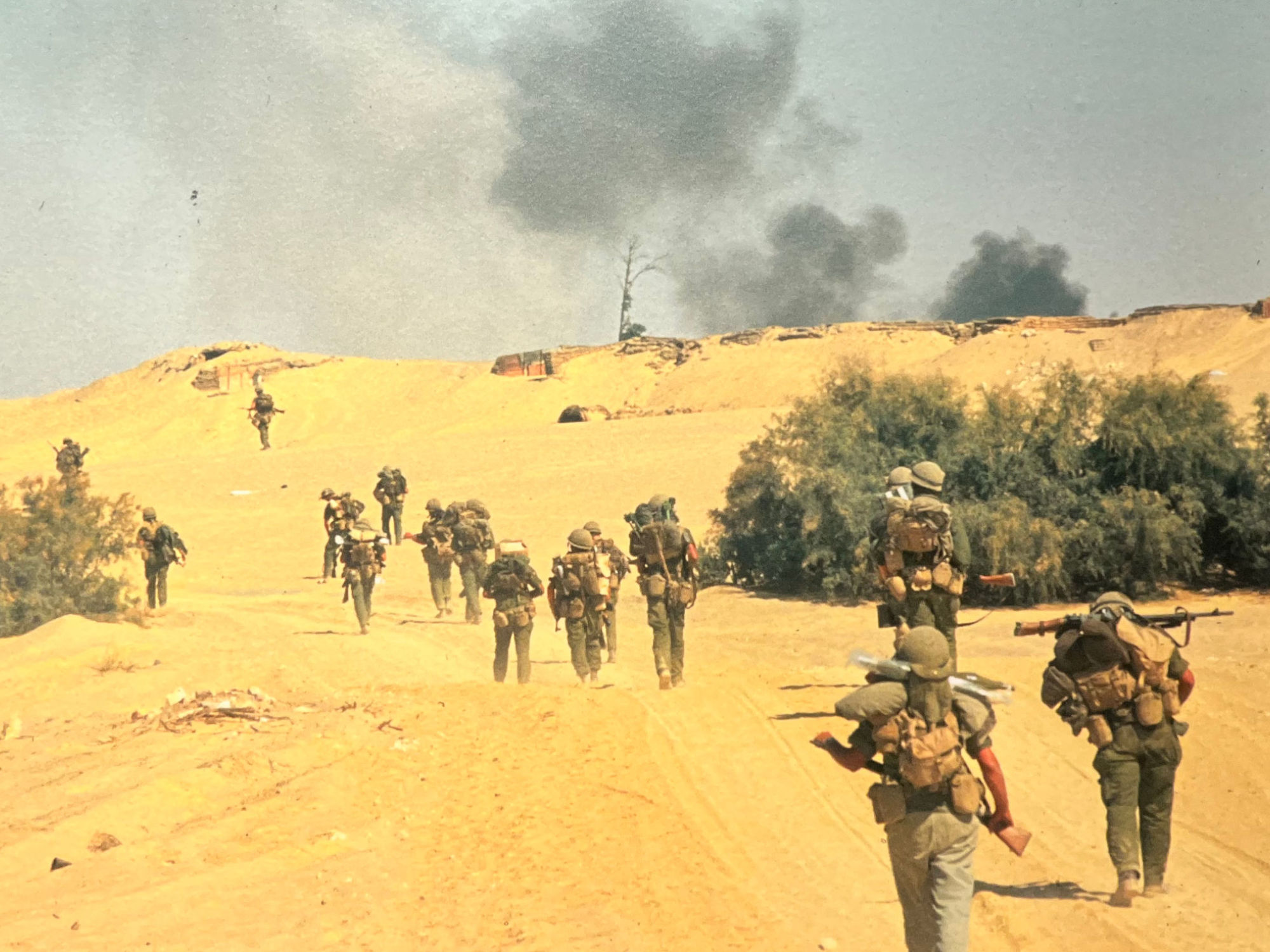
- Smoke and soldiers in the Yom Kippur War - October 1973
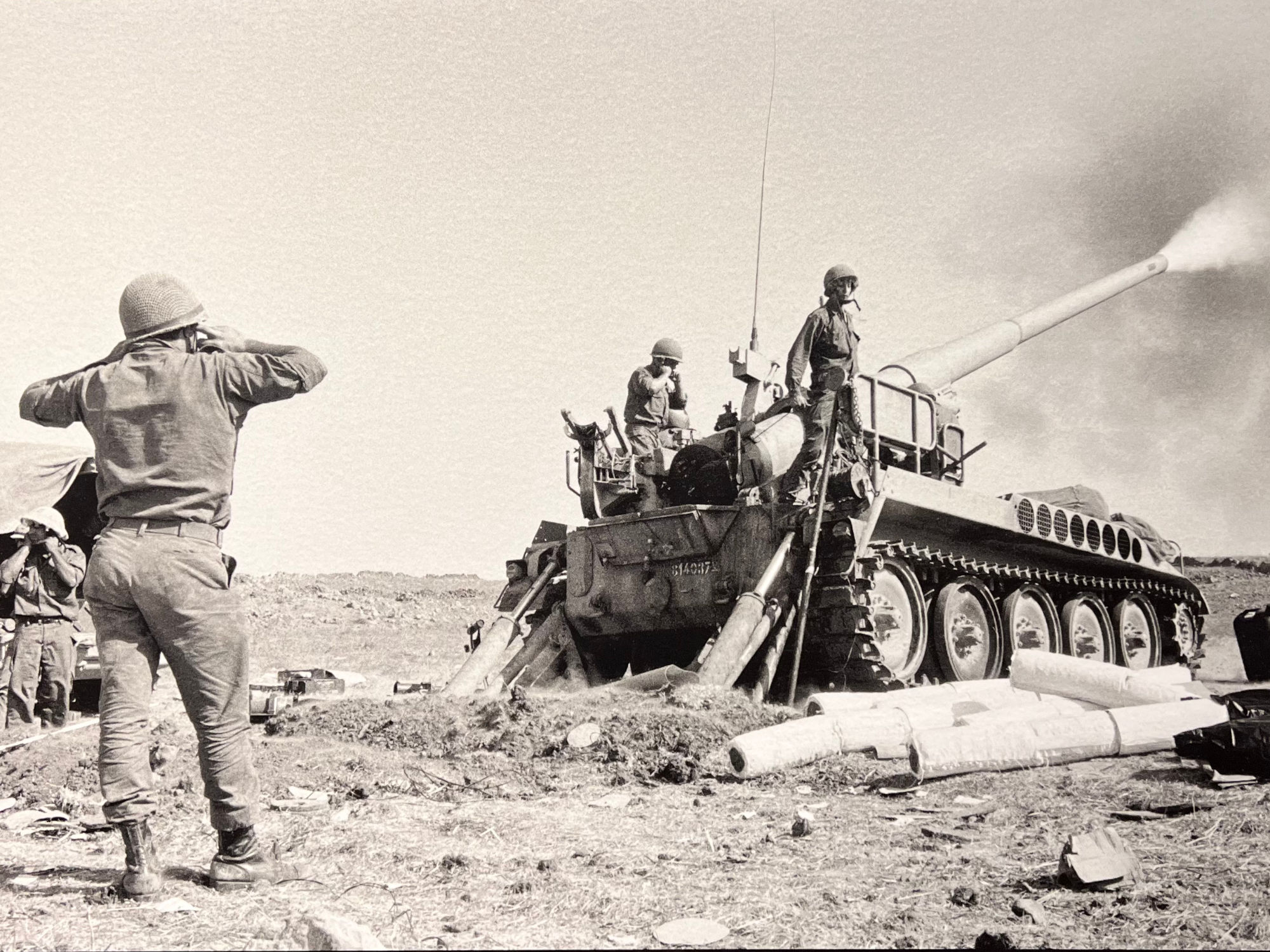
- In the Golan Heights, Israeli soldiers fire a field gun against Syrian forces - 1973
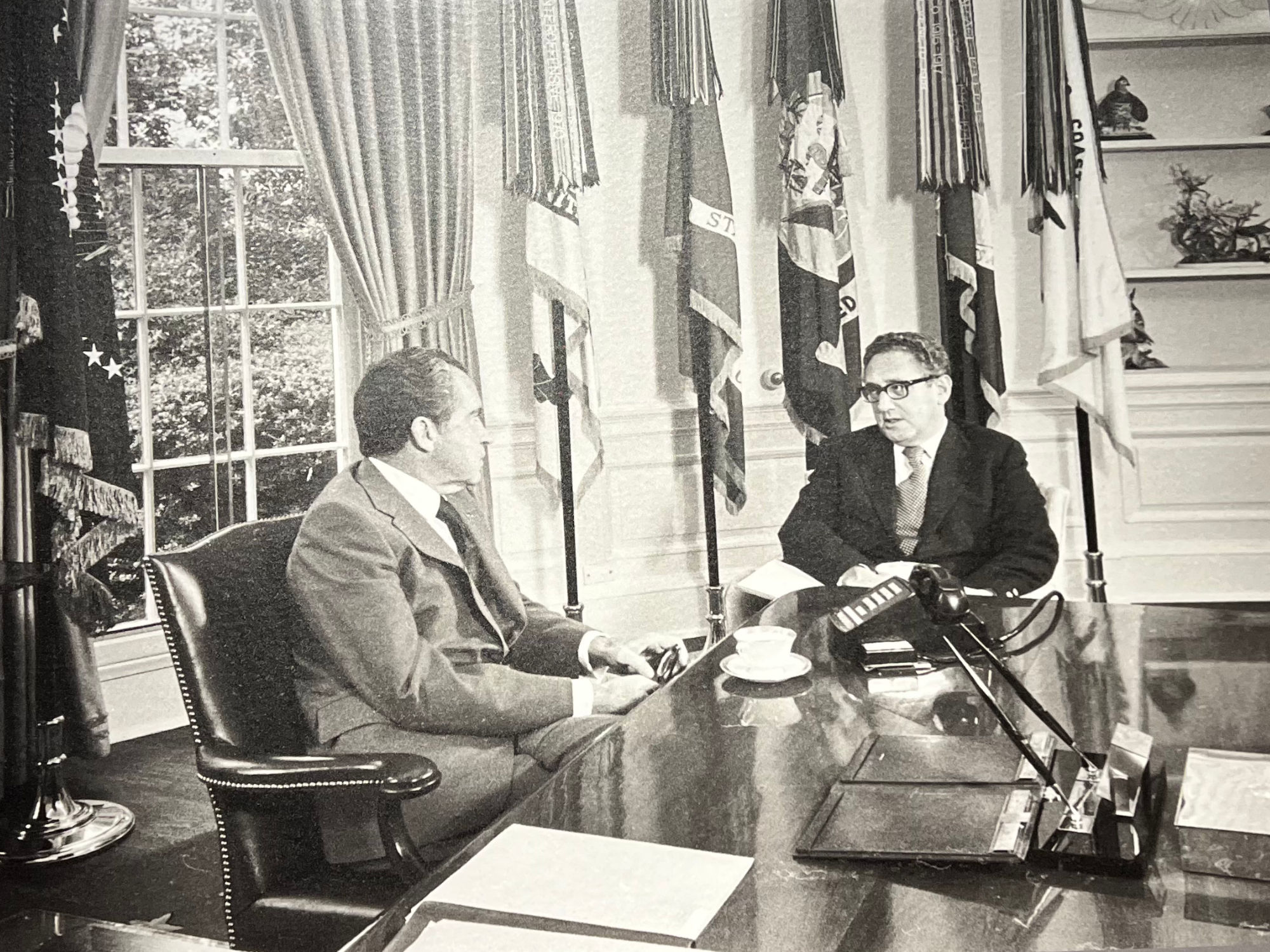
- President Nixon and Secretary of State Henry Kissinger, in the Oval Office, discuss the Arab-Israeli war - October 1973
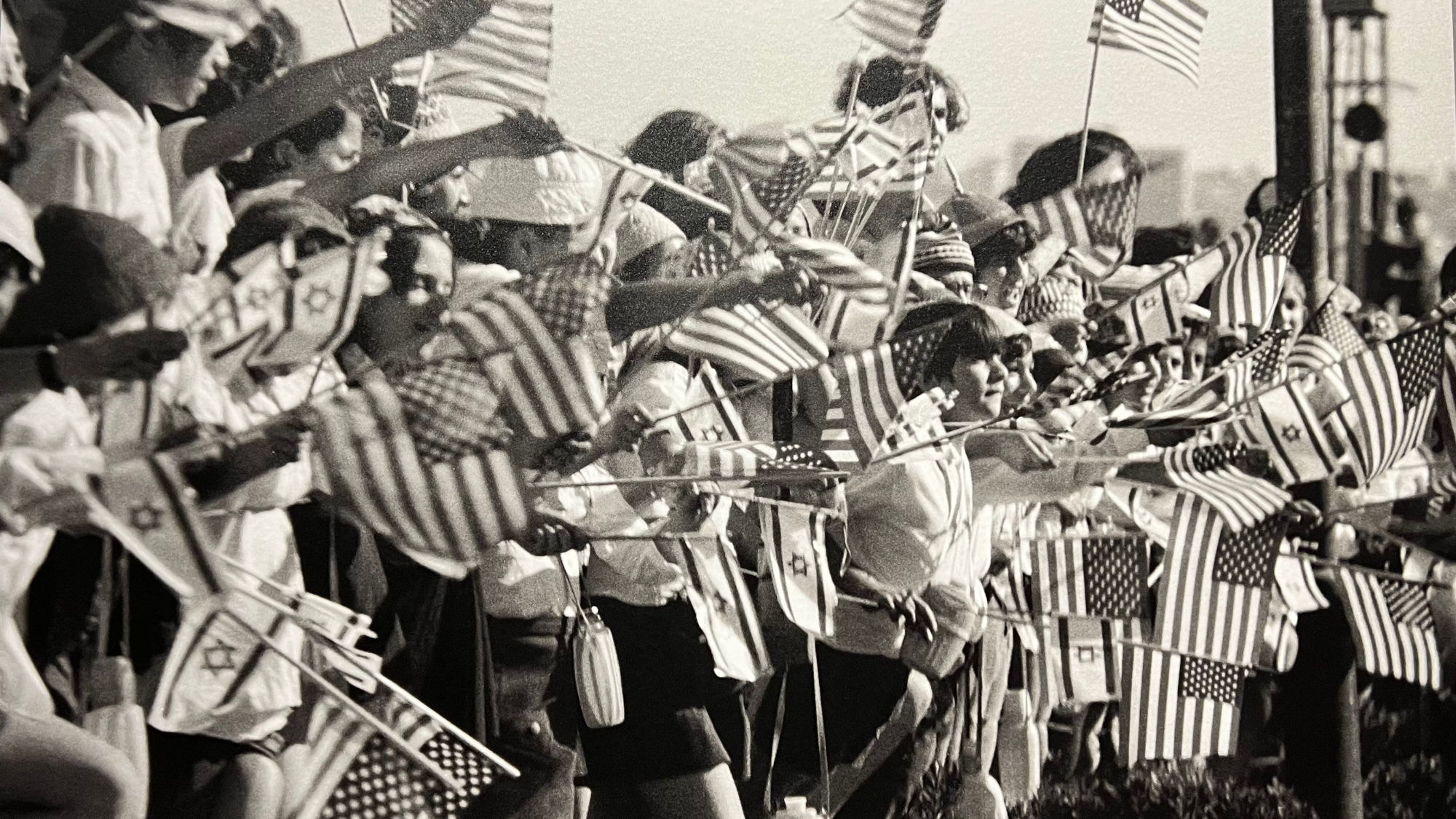
- Children wave American and Israeli flags during President Nixon's visit to Israel in 1974
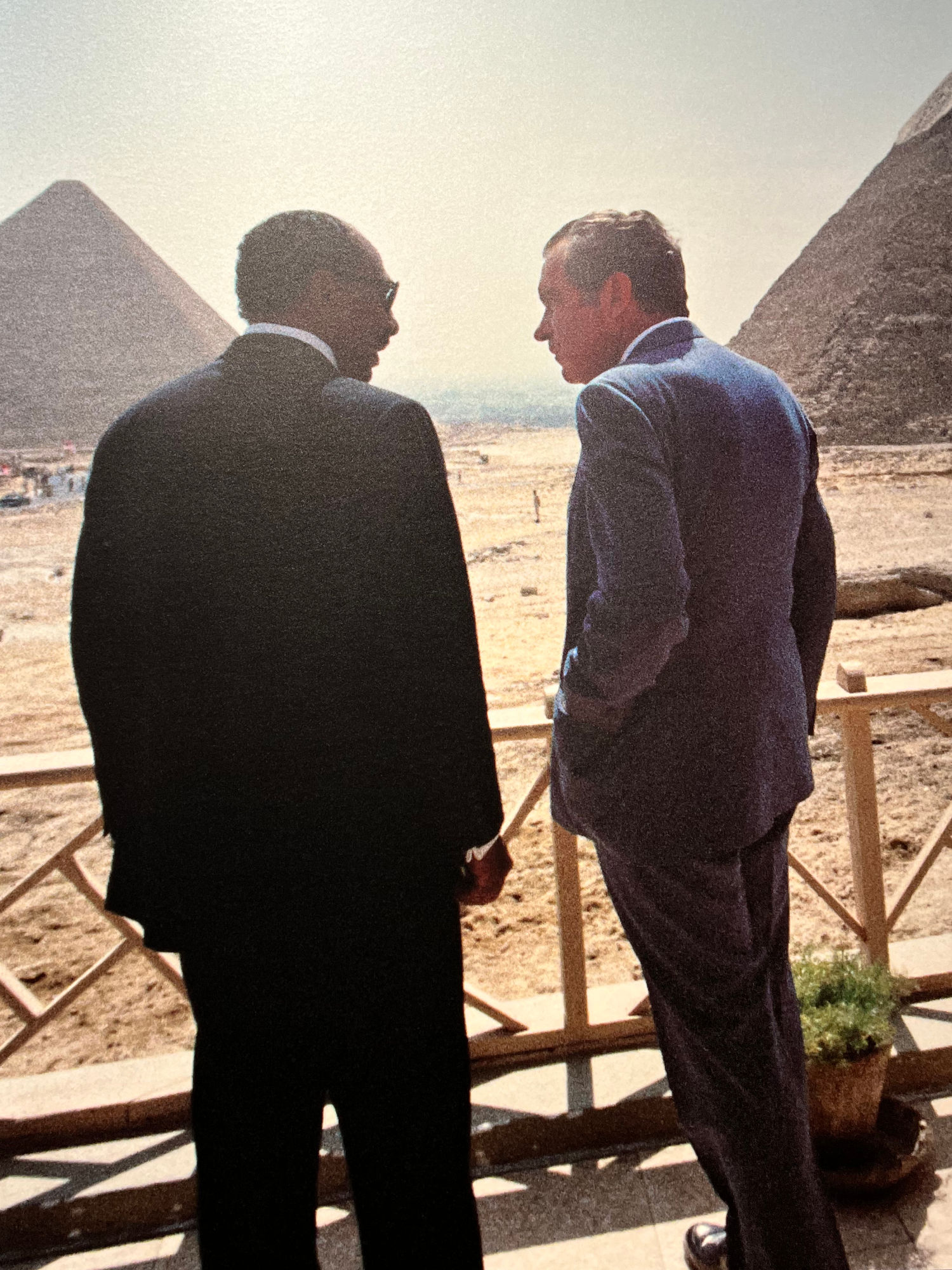
- President Nixon and President Sadat visit the pyramids in July 1974
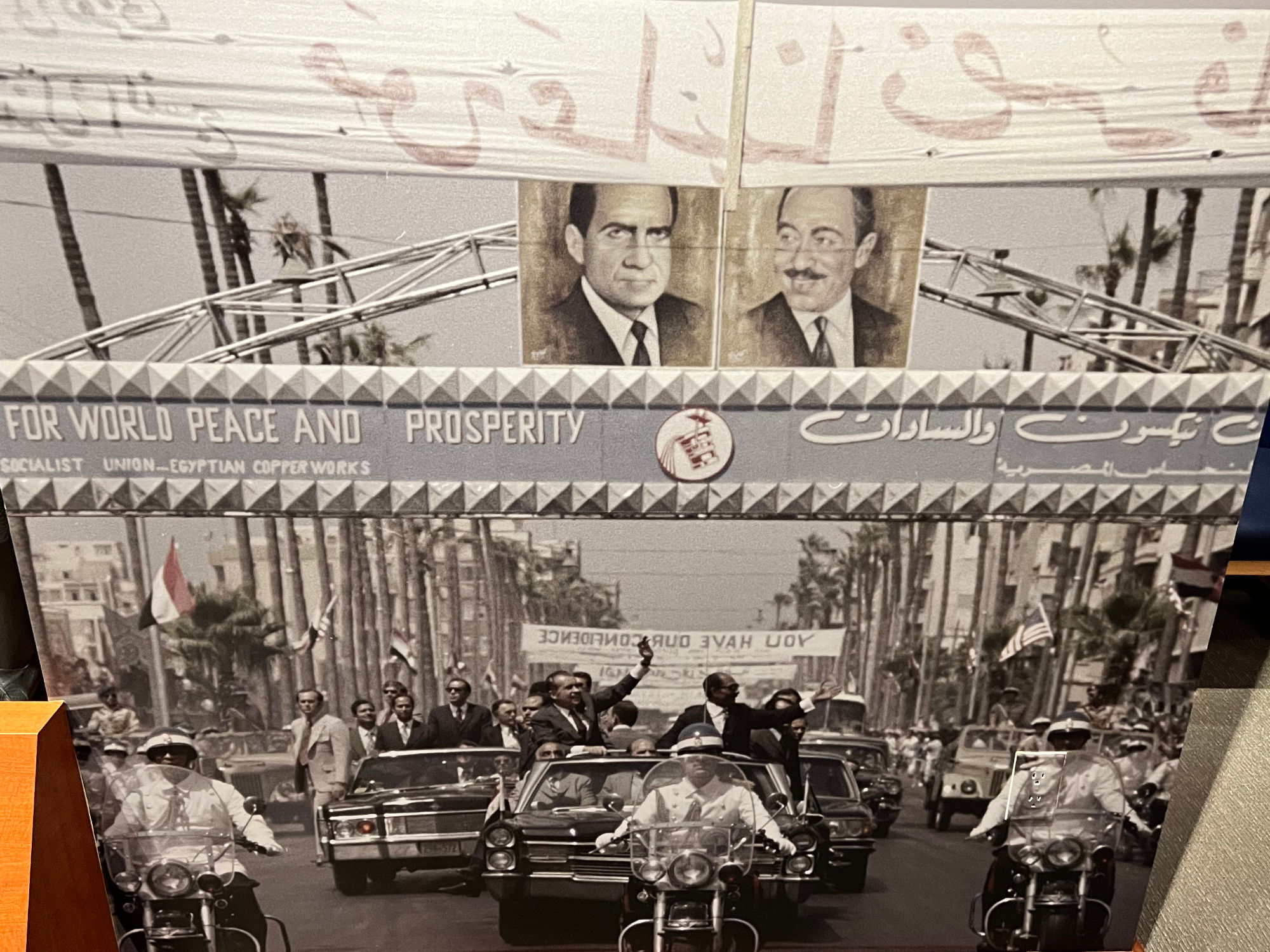
- President Nixon and Egypt's President Anwar Sadat ride in their motorcade through the streets of Cairo. An estimated two million people welcomed the American President - June 12, 1974
